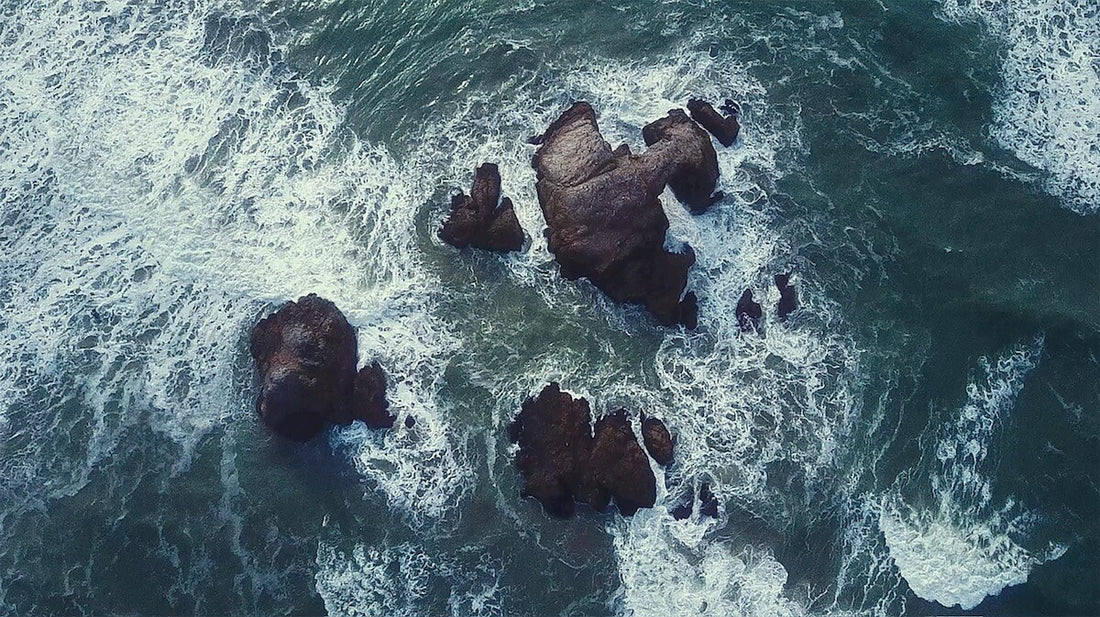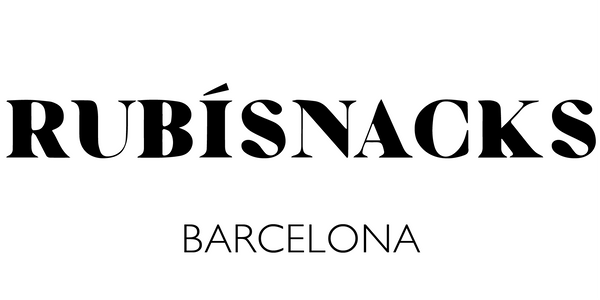
How we design a sustainable activewear brand
Share
Our process to design and build a sustainable fashion brand
As someone who’s had a lifelong interest in fashion, sports, and having a positive impact in my sphere, sustainability is a top priority for me as I build our active fashion brand, Rubisnacks Barcelona.

Our Perspective
The fashion industry is one of the largest polluters, along with transport and agriculture - enough to make me pause and ask if I really wanted to be a part of this industry or not. One could argue that it’s more sustainable for the brand to not exist and create more product.
However, sustainable products make up 17% and are set to grow by 32% according to TheRoundUp.org. Continuing to grow the market share of sustainable products can have a positive effect on the negative aspects of the industry. Fashion will always exist and people will continue to buy clothes. We need to fix it from within.
Shifting the industry by existing as a sustainable brand and growing our products to replace non-sustainable products will have a positive impact.

Creating a Sustainable Fashion Brand:
Sustainability is a big word with different meanings, and further more, the definition can shift based on context, i.e. when a company matures or what they prioritize within sustainability.
We are an independent brand within our first years of existence. Our sustainability journey may look different than others, even though we share similar goals.
We wanted to share a bit about our approach so you can better understand the company from which you’re purchasing and our philosophy.

Considerations:
People and Planet.
When creating and building a sustainable fashion brand, we work within the lens of People and Planet — the impact our products have on the people along the supply chain and who interact with the product after purchase, and the impact our products have on the environment.

Image: Sebastian Arie Voortman/Pexels
What, Who, How, and the Purpose of Rubisnacks Barcelona
Within this lens of people and planet, there are many considerations. We will share with you three of these considerations we take when creating and building a sustainable activewear brand: What, Who, and How we create our activewear collection, along with the Purpose of Rubisnacks Barcelona.
- What are we creating?
- Who is involved in creating and making it?
- How is it made and the processes?
- Above all, what is the purpose of creating this product?

The What:
We are creating sports bra and activewear styles, but what are these composed of? We look at the raw materials and the processes each material undergoes to achieve the final product in a sustainable way.
Materials
We use premium synthetic performance fabrics, so the consumers can have a garment that truly fits their needs, providing long lasting durability and comfort.
Prints: Our prints are made-to-order and printed on a recycled polyester knit fabric. This means we can reduce waste by not over-ordering materials to reach minimums. Our supplier uses the sublimation printing process, which is also sustainable - no waste water is created and we use non-toxic dyes.
Solids: For our solids, we source ECONYL®, which is a regenerated yarn made from post-industrial waste and nets from the ocean. This yarn is used to knit our Power Vita technical fabric in Italy. Like our prints, we only order what is needed —Rather than dyeing custom colors, we made the design decision to use their “running colors,” i.e. colors that are in stock. Therefore, we do not need to order by the roll, but rather can order by the meter, which cuts down on excess ordering and waste. Also like our prints, the solids are certified OEKO-TEX 100, free of toxic dyes.
Shipping
Both suppliers are in the EU: our prints in Northern Spain and our solids in outside of Milan, Italy. Selecting suppliers in our region helps to lower our CO2 footprint by shorter shipping distances than if we sourced elsewhere.
Remnants:
Typically, there is leftover fabrics after production, from small cuttings to random meters that are not enough to make into a full style. We actively find ways to repurpose these leftovers. For example, we have repurposed these leftovers into cute scrunchies.
 Image: Nur Andi Ravsanjani Gusma/Pexels
Image: Nur Andi Ravsanjani Gusma/Pexels
The Who:
Ensuring sustainable practices is a mix of community, trust, certifications, and intentional selection.
Certifications:
Certifications, seals, and regulations from the local to national and international level are critical for us as this provides an extra level of verification.
We select material suppliers that are in accordance with specific regulations and that are transparent in their offerings. Our printed fabrics are GRS, Global Recycled Standard certified and each fabric supplier provides detailed information on the sustainability accreditation.
Relationships:
We have connected closely with our workshop here in Barcelona. Having a third party auditor is not always possible as this is very expensive and some ateliers are not willing to take on the cost of certification. This doesn’t necessarily mean they are not compliant, but that they don’t have a particular seal or verification. That’s where having a close relationship comes into play - fostering trust and community where you can regularly visit and see your product being made is important en lieu of certifications.
Where we cannot readily visit our print supplier, we trust the certifications they’ve provided. Where we can hop on the metro to visit our atelier, we trust the relationship we’ve built and the reputation they have in the community as a place that abides by local and national workplace regulations.
Regulations:
Beyond this, we are specific in which countries we work as the governmental regulations play a large part in the way these companies operate. The EU has passed strict regulations and continues to do so, which makes all suppliers within the EU liable to adhere to these laws. If we decide to source outside of the EU, along with certifications and the relationships we build, we consider how the national laws of sustainability impact the suppliers’ practices.

The How:
Business model and intentional choices of a company play a role in sustainability. How have we designed our business model to be sustainable?
Simplified, Intentional Design:
After months of consumer research, testing, and iteration, we’ve come to better understand what women need from a sports bra and how we can design an activewear collection that fits your needs with sustainability in mind.
We focus on designing a core collection of silhouettes our consumers can know and love - instead of changing the silhouette each season, we design timeless styles that are trendless.
This is great from two perspectives:
- Simplified for the consumer - Once they know their size and preferred style, they do not need to worry about ordering something that won’t fit. Since we change out the colors and prints, you can order the style you want for the same fit, but still have variety. It’s makes the shopping process easier.
- Simplified for the factory - Once we finalize the fit and quality, the factory does not need to remake samples each time, like it normally would for new silhouettes. This cuts down on time and waste in prototyping and transit.
Timeless and Multipurpose Styles:
Our core collection is designed to be worn for many purposes and through many seasons - that means you can buy less and buy well. We are not interested in being trendy, we are timeless. We make things that last.
One of the pain points we discovered is that sports bras are over-optioned - there are million different types to select, it can be overwhelming as a shopper. By contrast, we’ve created a bra that can move with you from the gym to the street and beyond, so instead of buying one bra for each activity, you can buy one-bra-for-all.
Season-less and versatile fashion is sustainable.
Pre-Order Model:
Aside from our core collection design which aids in sustainability, we use a pre-order model when possible for our styles. This helps us better forecast demand by seeing what the consumers want and what they don’t want. For a lot of the larger companies, they have economies of scale and it can be cheaper to over-order and destroy the excess inventory rather than risk out the cost of missing a sale.
We prefer to order just what is needed or the minimum, rather than accumulate a lot of excess inventory, even if we miss out on a sale. In fact, we plan to sell out our styles. What doesn’t get sold goes into our archive and we do a quarterly archive sale. Nothing is destroyed.
Technology:
The design process can have a negative impact just in the need for multiple prototypes and fittings. We’ve decided to streamline as much as possible.
While we have simplified our design process with our core collection of timeless styles, we still do need some form of 3D rendering to see how the prints and colors while look on the body. Mock ups in the Adobe suite and other computer programs are essential in the process and can abate the need for multiple prototypes.

The Purpose:
Circling back to the origin of the idea, we come to the purpose - We are we putting another product into the market,
- why should it exist and is it sustainable?
- what is the net impact of this? Positive, negative?
- what problem does it solve and does it have a positive effect on the consumer?
Functional Style:
The original purpose behind Rubisnacks was to create a bra that functioned like a sports bra but didn’t look like one. I wanted a “one-bra-for-all” that I could wake up, throw on, and know that I could do whatever I wanted in it and still look good —I wanted something stylish and comfortable for work, that could easily transition to a fitness or martial arts class, and still make a cute outfit for dinner afterwards.
This mindset informs each decision we make, from what we create to how and for whom. Our activewear collection is meant to be worn, used, and enjoyed for many years. A garment you use again and again for many years is a sustainable garment.
Personal Impact:
I wanted to create a sports bra that made women excited to wear it and motivated them to get out there and make bold moves, whatever that may be.
Beyond the functional aspect, the purpose of Rubisnacks Barcelona is really about how we make women feel. Personally, sports have given so much to me - confidence, friends, they’ve taught me how to win and lose, and I’ve learned how to push myself.
Having a sports bra that allows women to partake in sports or fitness so that they can gain experiences that help them grow as individuals is our larger purpose.
We are for women making bold moves.
Having a positive impact at the personal level is ultimately sustainable as well - we want to uplift with our brand with positive and responsible messaging so that you feel good and look great as you make bold moves.

Rubisnacks Barcelona: Building a Sustainable Active Fashion
Of course, the topic of sustainability is both broad and deep. These are just a few of the many considerations we take at Rubisnacks Barcelona as we design and build our active fashion brand.
As we gain more information and evolve, our approach to sustainability may change. But the core principles of People and Planet are constant.
Sustainable Consumers:
Lastly, we appreciate consumers, like you, who are interested in sustainable fashion. With your help, we can make the market share of sustainable products grow, which only serves to make for a better world.
 Image: Sebastian Arie Voortman/Pexels
Image: Sebastian Arie Voortman/Pexels
To read more about our sustainable practices, check out our Sustainability Principles
